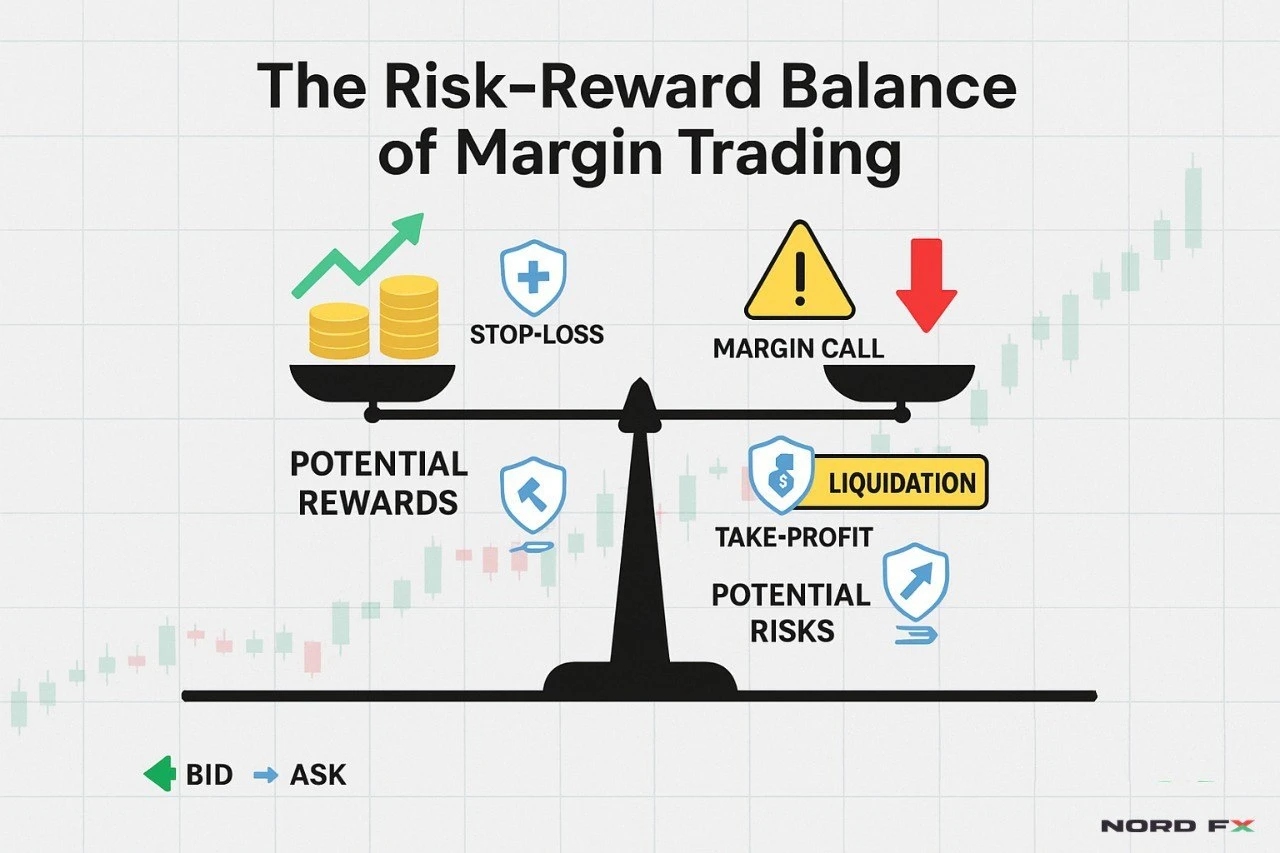What is Margin Trading?
Margin trading allows traders to open positions larger than their own capital by using borrowed funds. You deposit a fraction of the trade’s total value — the margin — and the broker provides leverage for the rest.
For example, with 1:100 leverage, a deposit of just $100 gives access to a $10,000 position in the financial markets. This magnifies both potential profit and potential loss.
Margin trading is used in forex, commodities, futures, and cryptocurrencies, making it one of the most common tools available to traders.

How Margin Trading Works
When you enter a trade, two important mechanics apply:
- Bid/ask spread – the difference between buying and selling prices.
- Long and short positions – going long means buying in expectation of a rise, going short means selling in expectation of a fall.
- Financing charges – swaps or overnight fees may apply if you hold positions open across sessions.
The Rewards of Margin Trading
- Efficient use of capital: control larger positions with smaller deposits.
- Ability to trade in both rising and falling markets.
- Wide availability across forex, commodities, futures, and crypto.
- Potential for faster account growth compared with unleveraged investing.
The Risks
- Amplified losses from small adverse moves.
- Margin calls and automatic liquidation if equity falls below required levels.
- Volatility shocks that trigger stop-losses or exceed expected risk.
- Overtrading and overconfidence due to easy access to leverage.
How to Manage Risk
- Position sizing – risk only 1–2% of account equity per trade.
- Stop-loss orders – fix a maximum loss before entering a trade.
- Trailing stop-loss – allow profits to run while locking in gains automatically.
- Take-profit orders – secure profit at a set level.
- Daily chart context – use the daily chart to identify overall trend and avoid trading against market direction.
- Diversification – spread exposure across different assets instead of concentrating on one trade.
Margin Across Different Markets
- Forex – high leverage ratios and 24/5 access..
- Commodities – gold, oil and others, but with sensitivity to geopolitical events.
- Futures – standardised contracts with margin set by exchanges.
- Cryptocurrencies – highly volatile, often collateralised with stablecoins, demanding stricter risk control.
Example: A Margin Trade
- A trader expects GBP/USD to rise.
- Account equity is $1,000 with 1:50 leverage available.
- Position sizing: risk limited to 1% ($10).
- A long position of 0.1 lots is opened.
- Stop-loss set 50 pips below entry, take-profit 100 pips above.
- Trailing stop-loss activated as price advances to protect gains.
Final Thoughts
Margin trading is powerful, but it demands discipline. It offers flexibility, efficiency, and opportunity, but also exposes traders to amplified risk. By applying simple rules — proper position sizing, stop-losses, trailing stops, and alignment with the daily chart — margin can become a tool for growth rather than a threat to capital.
Go Back Go Back
